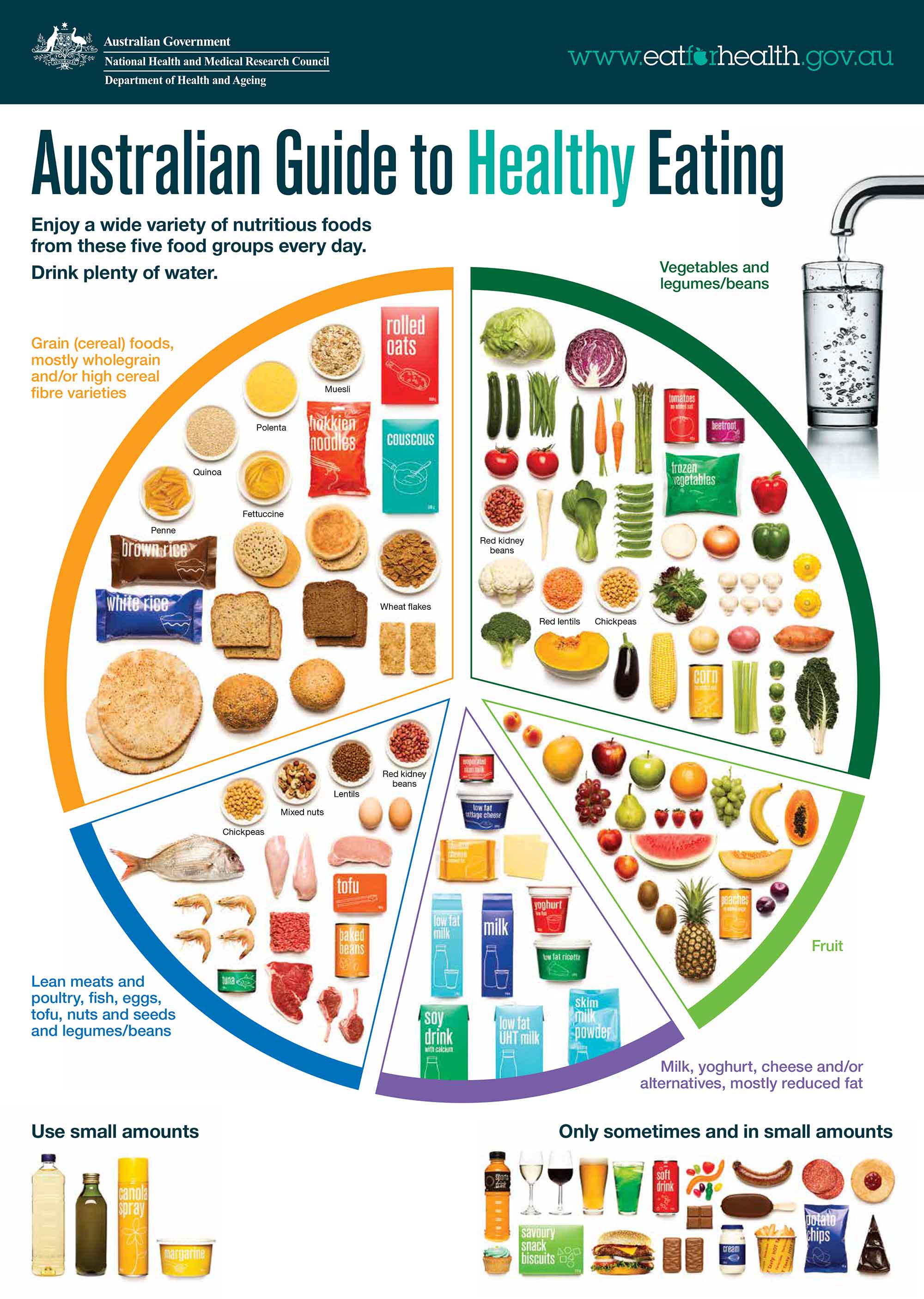Health & Safety
Healthy Eating for ChildrenTeach your child healthy habits for a healthy life
What are the dietary Guidelines?
The Australian Dietary Guidelines provide up-to-date advice about the amount and kinds of foods that we need eat for health and wellbeing. They are based on scientific evidence and research.
The Australian Dietary Guidelines of most relevance to children are included below:
GUIDELINE 1
To achieve and maintain a healthy weight, be physically active and choose amounts of nutritious food and drinks to meet your energy needs.
- Children and adolescents should eat sufficient nutritious foods to grow and develop normally. They should be physically active every day and their growth should be checked regularly.
GUIDELINE 2
Enjoy a wide variety of nutritious foods from these five food groups every day:
- Plenty of vegetables of different types and colours, and legumes/beans
- Fruit
- Grain (cereal) foods, mostly wholegrain and/or high cereal fibre varieties, such as breads, cereals, rice, pasta, noodles, polenta, couscous, oats, quinoa and barley
- Lean meats and poultry, fish, eggs, tofu, nuts and seeds, and legumes/beans
- Milk, yoghurt, cheese and/or their alternatives, mostly reduced fat (reduced fat milks are not suitable for children under the age of 2 years)
And drink plenty of water.
GUIDELINE 3
Limit intake of foods containing saturated fat, added salt, added sugars and alcohol.
a. Limit intake of foods high in saturated fat such as many biscuits, cakes, pastries, pies, processed meats, commercial burgers, pizza, fried foods, potato chips, crisps and other savoury snacks.
- Replace high fat foods which contain predominately saturated fats such as butter, cream, cooking margarine, coconut palm oil with foods which contain predominately polyunsaturated and monounsaturated fats such as oils, spreads, nut butters/pastes and avocado.
- Low fat diets are not suitable
for children under the age
of 2 years.
b. Limit intake of foods and drinks containing added salt.
- Read labels to choose lower sodium options among similar foods.
- Do not add salt to foods in cooking or at the table.
c. Limit intake of foods and drinks containing added sugars such as confectionary, sugar-sweetened soft drinks and cordials, fruit drinks, vitamin waters, energy sports drinks.
GUIDELINE 4
Encourage, support and promote breastfeeding.
GUIDELINE 5
Care for your food; prepare and store it safely.
Learn more about Dietary Guidelines
Find out about 5 Ways to a Healthy Lifestyle








